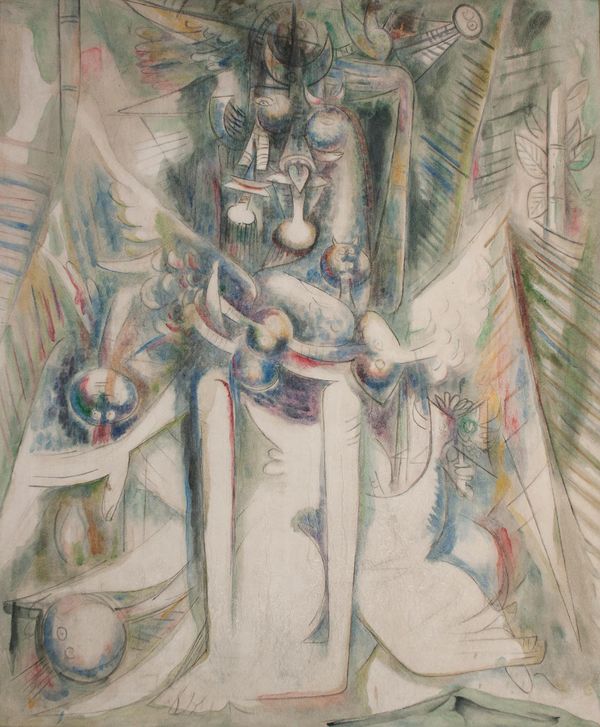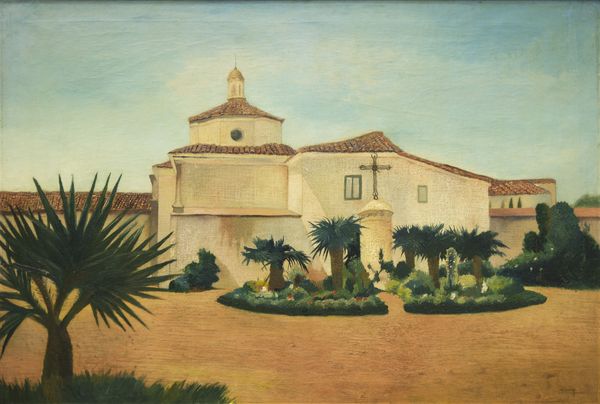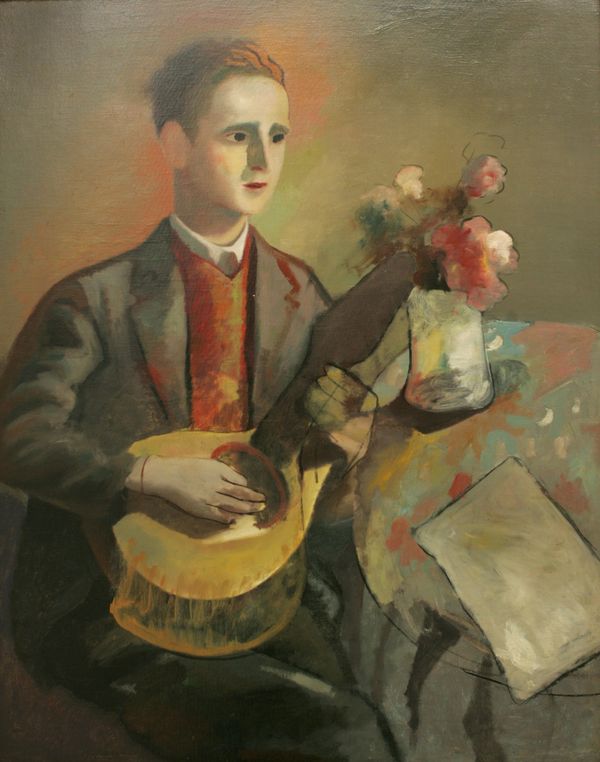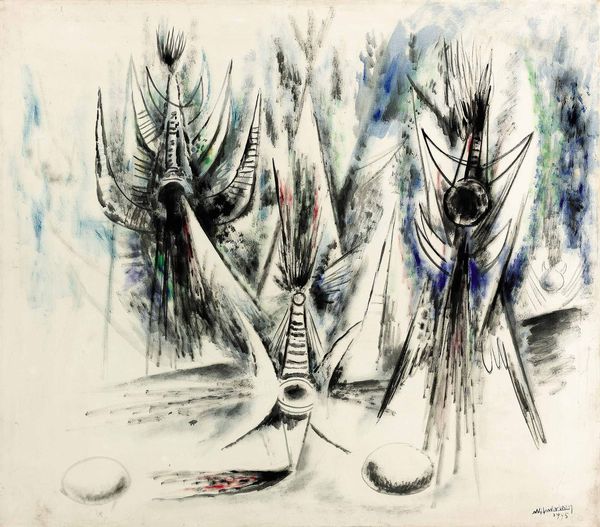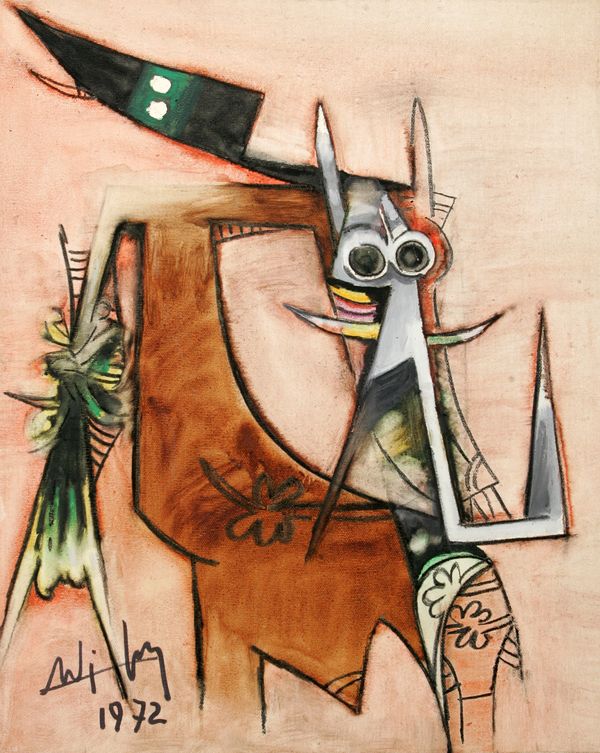Wifredo Lam Hermès Trismégiste, 1945 (detail)
In 1902, Wifredo Lam was born in Cuba to an inimitably syncretized family: his father a Chinese immigrant; his mother a Catholic from a long line of Congolese slaves; his godmother a celebrated Santería priestess. As the boundaries within Lam's personal patrimony were blurred to the point of confusion, his unique vocabulary of cultural references was stretched even wider upon his arrival in Europe in 1932. While studying in Madrid, Lam would spend hours in the Prado copying the works of Old Masters, particularly Brueghel and Bosch. Meanwhile, his evenings were spent in experimental workshops influenced by younger nonconformist artists including Salvador Dalí.
Lam was already gaining exposure to both the canonical traditions of European art and the modern movements sweeping fervently through Western artistic circles when, in 1938, he moved to Paris and became closely acquainted with Pablo Picasso. The co-founder of Cubism was quick to support Lam and introduce him to Henry Matisse, among other key figures. If the boundaries within Lam's frame of reference were already riotously blurred, the influx of Surrealist and Cubist influences jumbled them to the point of bewilderment.
To "bewilder," or confuse, especially by complexity or multitude of objects or considerations, is particularly apt in describing Lam's works painted upon his return to Cuba in 1941. 1945's Hermès Trismégiste epitomizes this model of "confusion by multitude" while 1962's La Sposa and 1972's Le Potrait d'un inconnu "confuse by complexity of considerations," presenting figures not recognizably human or animal.
If the boundaries within Lam's frame of reference were already riotously blurred, the influx of Surrealist and Cubist influences jumbled them to the point of bewilderment.
Wifredo Lam Hermès Trismégiste, 1945
Presented in partnership with NAMLA Gallery, our exhibition at 30 Berkeley Square, Wifredo Lam: Blurring Boundaries, illustrates both the continuous development of Lam's style towards the parameters of abstraction from 1933 to 1972 as well as the striking gulf between the two earliest works, which predate 1941, and the others.
It seems incongruous, but while Picasso and André Breton were carving out their avant-garde designs, another trend had Parisian society enraptured: Exoticism. This involved the representation of non-Western cultures for Western consumption; as such, Afro-Caribbean cultures were hugely fashionable in Europe, but only insofar as they were 'Other' — uncivilized and entertaining. The patronizing trend was manifest in the uproarious popularity in Paris of Josephine Baker, the American-born French dancer and muse of Picasso whose "danse sauvage," performed wearing only a skirt of bananas, made her world-famous. Although fully accepted into Western artistic and intellectual circles, Lam was frustrated by black cultures' invisibility in Europe. Baker's comical primitivism was countered only by tourism brochures that projected picturesque Caribbean visions, whitewashing the populations' oppression in favor of beaches and wildlife.
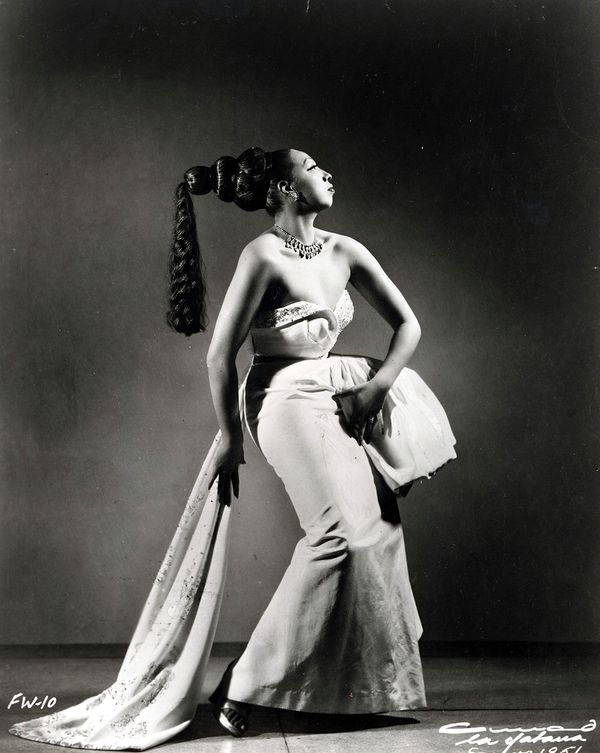
A postcard of dancer and entertainer Josephine Baker (1906-'75)
Just as he integrated Surrealist and Cubist elements into his style, Lam carefully reappropriated strands of Exoticism. His prominence in Europe gave him an unparalleled opportunity to make black cultures visible and valid, playing voodoo and Santería iconography against contemporary avant-garde themes. Lam teased Europe's perception of black cultures as "savage" by making it increasingly difficult and irrelevant to differentiate human, animal and even plant forms in his paintings. Hence, the chasm between the two earliest paintings in our exhibition, both painted during Lam's years in Spain, and the others, in which syncretized life-forms and iconography are increasingly bewildering, becomes apparent.
The earliest two works, Sans Titre (Untitled) from 1933 and 1937, are flecked with symbols of a "civilized" European lifestyle, including the Catholic cross, manicured gardens, a vase of cut flowers and instruments associated with higher education. In spite of the works' bright palettes, both have an eerily dispassionate quality. The absence of movement in the first, possessing not one rogue cloud or stray leaf, and the morbid pallor and wistful distant expression of the musician in the second evoke a sense of lifelessness.
Wifredo Lam Sans Titre (Untitled), 1933 (top) and Sans Titre (Untitled), 1937 (below)
By 1945, Lam's figures are no longer recognizably human: multitudes of limbs and heads are interwoven in Hermès Trismégiste with leaves and branches suggestive of birds' wings. In Les Oiseaux Voilés and Butinantes, both from 1945, the boundaries between human and animal are further confused by the invasion of voodoo imagery. Skeletal bodies, wings and crowns give the figures in Butinantes the appearance of "angels of death" — a marked contrast to the sedate and immobile Christianity portrayed in 1933. Lam's later works eschew distinctions between human and animal altogether, confidently offering bold and fantastic figures in a distinctly Cubist style. The hybrid figures in La Sposa (1962), Here on Earth (1955) and Portrait d'un inconnu (1972) are somehow simultaneously playful and disturbing. The blurring of this boundary is crucial to Lam's enterprise.
Wifredo Lam Les Oiseaux Voilés (top) and Butinantes (below), both from 1945
"I wanted with all my heart to paint the drama of my country, but by thoroughly expressing the Negro spirit, the beauty of the plastic art of the blacks. In this way I could act as a Trojan horse that would spew forth hallucinating figures with the power to surprise, to disturb the dreams of the exploiters." —Wifredo Lam
Lam's Afro-Cuban heritage is inescapably fundamental to his work, but his immersion in Europe is just as essential. He re-settled in Paris in 1952 and died there thirty years later. Decades spent in Spain, France and Italy, marriages to Spanish, German and Swedish women, the esteem of European artists and intellectuals, his incorporation of Western movements in his work — all this confirmed Lam's standing within European cuture and society. This enabled him to play the role of "Trojan horse," infiltrating Europe's artistic consciousness with Afro-Cuban symbols with a bewildering vitalty and originality.
Wifredo Lam Le Potrait d'un inconnu (A Portrait of an Unknown), 1972
Lam's endorsement of voodoo, primitivism and human-animal hybridity subverts the colonizing discourses from which he has reclaimed them, demonstrating his images' "power to disturb the dreams of the exploiters" and overwhelming the staid and demure images of Europe from his earlier work.

